
Library of Congress Cataloging-in-Publication Data
Braunstein, Mark Mathew, 1951
Microgreen garden : indoor grower's guide to gourmet greens / by Mark Mathew Braunstein.
p. cm.
Includes index.
ISBN 978-1-57067-294-1 (pbk.) ISBN 978-1-57067-899-8 (e-book)
1. Edible greens. 2. Indoor gardening. 3. Container gardening. 4. Gardens,
Miniature. I. Title. II. Title: Indoor grower's guide to gourmet greens.
SB339.B68
2013 635'.3dc23
Cover photos, top to bottom: Sorrel, Marjoram, and Sesame (front); Cinnamon Basil and Romaine Lettuce (back)
2013 Mark Mathew Braunstein
Microgreens photos 2013 Mark Mathew Braunstein
All rights reserved. No portion of this book may be reproduced by any means whatsoever, except for brief quotations in reviews, without written permission from the publisher.
Cover and interior design: John Wincek Stock photography: 123 RF
Printed in Hong Kong
Book Publishing Company
P.O. Box 99
Summertown, TN 38483
888-260-8458
bookpubco.com
ISBN 13: 978-1-57067-294-1
19 18 17 16 15 14 13 1 2 3 4 5 6 7 8 9
Book Publishing Company is a member of Green Press Initiative. We chose to print this title on paper with 100% postconsumer recycled content, processed without chlorine, which saves the following natural resources:
29 trees
908 pounds of solid waste
13,575 gallons of water
2,502 pounds of greenhouse gases
13 million BTU of energy
For more information on Green Press Initiative, visit greenpressinitiative.org.
Environmental impact estimates were made using the Environmental Defense Fund Paper Calculator. For more information visit papercalculator.org.
Printed on recycled paper

CONTENTS
ACKNOWLEDGMENTS
 his book is for people who want to grow microgreen gardens at home, but in writing it, Ive drawn from the expertise of professional growers. I owe my thanks to Lauri Roberts of Farming Turtles Microgreens, based in Exeter, Rhode Island. Lauri graciously guided me on a tour of her indoor microgreen farm and showed me how to grow microgreens affordably, cleanly, and easily.
his book is for people who want to grow microgreen gardens at home, but in writing it, Ive drawn from the expertise of professional growers. I owe my thanks to Lauri Roberts of Farming Turtles Microgreens, based in Exeter, Rhode Island. Lauri graciously guided me on a tour of her indoor microgreen farm and showed me how to grow microgreens affordably, cleanly, and easily.
The very idea of growing and eating sunflower greens (see ) began with one person, Viktoras Kulvinskas, cofounder of the Hippocrates Health Institute and the author of many books on raw foods, sprouting, and natural living. One scant generation after Viktoras harvested his first crop, most North Americans have heard about sunflower greens, many have eaten them, and some have even grown them. On behalf of sprout growers and microgreen gardeners worldwide, and on my own behalf as one of Viktors inspired readers and honored friends, I bestow upon him my heartfelt thanks. Thank you, Viktor!

INTRODUCTION
A new world awaits. Are you ready?
 or many centuries, our human family has cultivated a wide variety of plants for food. Traditionally, weve grown them to their mature stages in outdoor gardens or on farms. Then, in more recent history, health-conscious eaters everywhere began to grow sprouts from seeds. Nourishing and satisfying, sprouts are easily grown indoors, even in darkness, and require only warm air and fresh rinse water.
or many centuries, our human family has cultivated a wide variety of plants for food. Traditionally, weve grown them to their mature stages in outdoor gardens or on farms. Then, in more recent history, health-conscious eaters everywhere began to grow sprouts from seeds. Nourishing and satisfying, sprouts are easily grown indoors, even in darkness, and require only warm air and fresh rinse water.
Today, growing microgreens indoors is the hot new trend. The young seedlings of vegetables, herbs, beans, and grains, microgreens take a bit more time to grow than sprouts, and unlike sprouts, they require both soil and sunlight. As a result, the tender greens are rich in health-supporting phytonutrients and chlorophyll.
Beyond promising exceptional nutrition, microgreens quench our longing for the freshest possible greens. Dozens of familiar crops can be grown as microgreens, and these varieties delight with diverse colors and flavors. Indeed, microgreens are a feast for both the eyes and the appetite. Possibly the easiest food to prepare, theyre best eaten raw and unadorned, but you can also incorporate mild-flavored microgreens into salads and other plant-based dishes. And zesty microgreens, such as radish or mustard greens, can be mixed with more neutral greens or used like a condiment to contribute spice or heat.
If youve mastered the art of growing sproutsand even if you haventits easy to advance to growing microgreens. You dont need a green thumb to succeed, but you do need patience and persistence. Ultimately, youre likely to discover that tending your microgreen garden will be a joy, not a chore. Be good to your microgreens, and theyll be good for you. One wonderful and free benefit of growing microgreens indoors is that the plants will oxygenate and cleanse the air that you breathe. The room in which you grow microgreens will smell fresh, and even if you become accustomed to this benefit and cease to notice it, visitors to your home surely will.
The following chapters provide in-depth information and detailed instructions that will usher you into an appetizing and nourishing new world. May your future be filled with microgreens, and may all your harvests be bountiful and beautiful!

starting your microgreen garden
No matter where you live or what the season, you can be a successful microgreen gardener. By growing microgreens, you gain access to fresh, delectable, organic, and homegrown greens year-round. And all you need to start your indoor garden are seeds, soil, water, and access to a sunny window or grow lights. through 4 provide all the specifics on these topics.
GO FOR THE GREENS
 icrogreens have the potential to be nutritional powerhouses. Although theres very little research on the nutrients they contain, microgreens have been routinely compared to sprouts, which are nutritional giants. Although microgreens may not have quite the vitamin and mineral content of sprouts, theyre significant sources of chlorophyll and phytonutrients because theyre grown in light, not in darkness as sprouts are.
icrogreens have the potential to be nutritional powerhouses. Although theres very little research on the nutrients they contain, microgreens have been routinely compared to sprouts, which are nutritional giants. Although microgreens may not have quite the vitamin and mineral content of sprouts, theyre significant sources of chlorophyll and phytonutrients because theyre grown in light, not in darkness as sprouts are.
When exposed to light, a seedling develops chlorophyll. As a nutrient, chlorophyll has antiseptic and anti-inflammatory properties that seem to guard against and even cure some types of anemia.
Phytonutrients are substances in plants (phyto means plant) that promote health, prevent disease, and help cure illness, including cancer. These protective nutrients are most concentrated among the large group of plants called , which includes broccoli, cabbage, and kale. Plants produce phytonutrients to protect themselves against environmental stressors and diseaseand fortunately for us, when we consume plants, these substances also benefit human health.



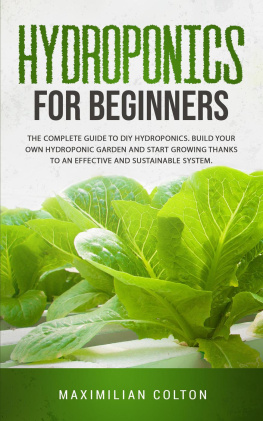

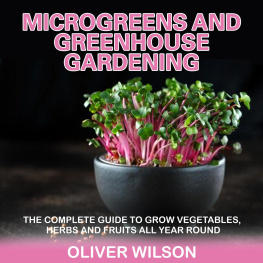

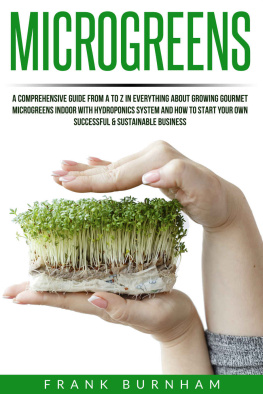
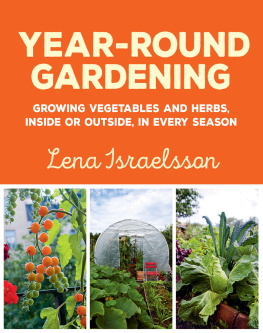
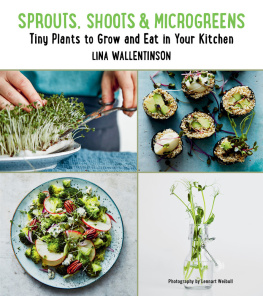
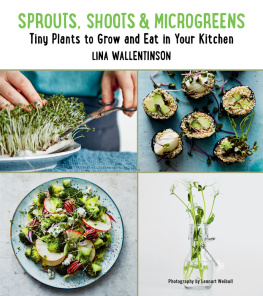
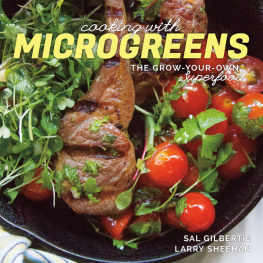
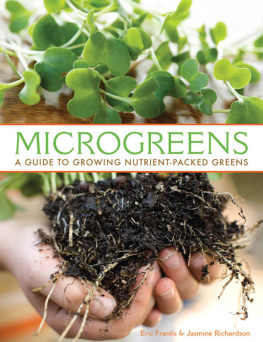
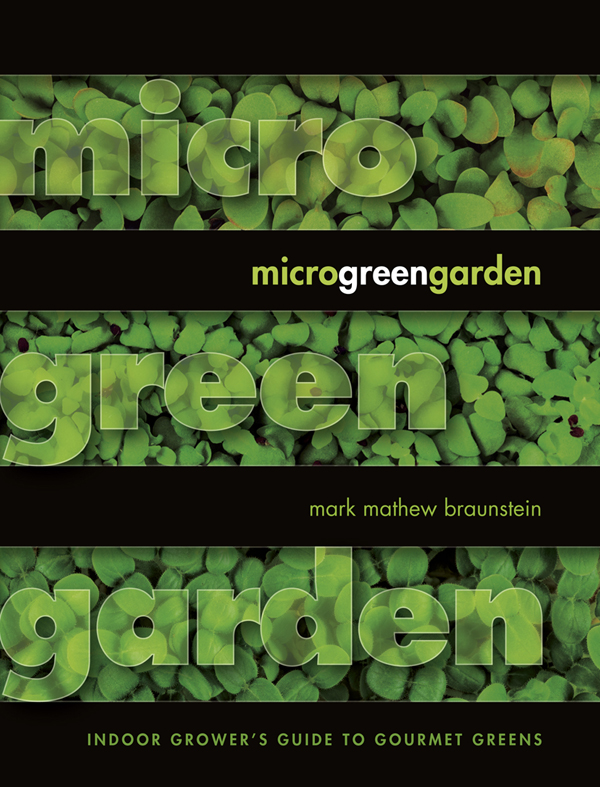


 his book is for people who want to grow microgreen gardens at home, but in writing it, Ive drawn from the expertise of professional growers. I owe my thanks to Lauri Roberts of Farming Turtles Microgreens, based in Exeter, Rhode Island. Lauri graciously guided me on a tour of her indoor microgreen farm and showed me how to grow microgreens affordably, cleanly, and easily.
his book is for people who want to grow microgreen gardens at home, but in writing it, Ive drawn from the expertise of professional growers. I owe my thanks to Lauri Roberts of Farming Turtles Microgreens, based in Exeter, Rhode Island. Lauri graciously guided me on a tour of her indoor microgreen farm and showed me how to grow microgreens affordably, cleanly, and easily.
 or many centuries, our human family has cultivated a wide variety of plants for food. Traditionally, weve grown them to their mature stages in outdoor gardens or on farms. Then, in more recent history, health-conscious eaters everywhere began to grow sprouts from seeds. Nourishing and satisfying, sprouts are easily grown indoors, even in darkness, and require only warm air and fresh rinse water.
or many centuries, our human family has cultivated a wide variety of plants for food. Traditionally, weve grown them to their mature stages in outdoor gardens or on farms. Then, in more recent history, health-conscious eaters everywhere began to grow sprouts from seeds. Nourishing and satisfying, sprouts are easily grown indoors, even in darkness, and require only warm air and fresh rinse water.
 icrogreens have the potential to be nutritional powerhouses. Although theres very little research on the nutrients they contain, microgreens have been routinely compared to sprouts, which are nutritional giants. Although microgreens may not have quite the vitamin and mineral content of sprouts, theyre significant sources of chlorophyll and phytonutrients because theyre grown in light, not in darkness as sprouts are.
icrogreens have the potential to be nutritional powerhouses. Although theres very little research on the nutrients they contain, microgreens have been routinely compared to sprouts, which are nutritional giants. Although microgreens may not have quite the vitamin and mineral content of sprouts, theyre significant sources of chlorophyll and phytonutrients because theyre grown in light, not in darkness as sprouts are.